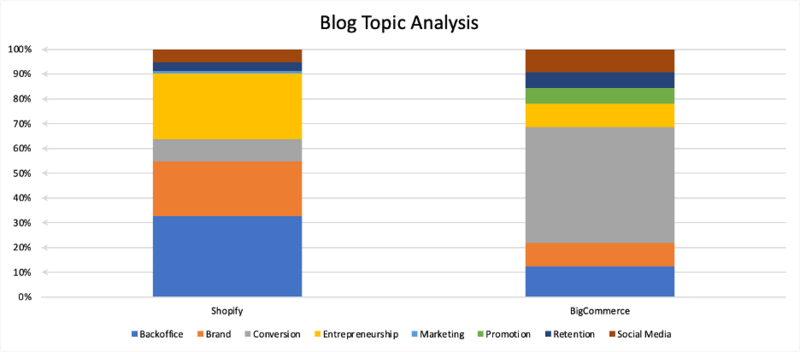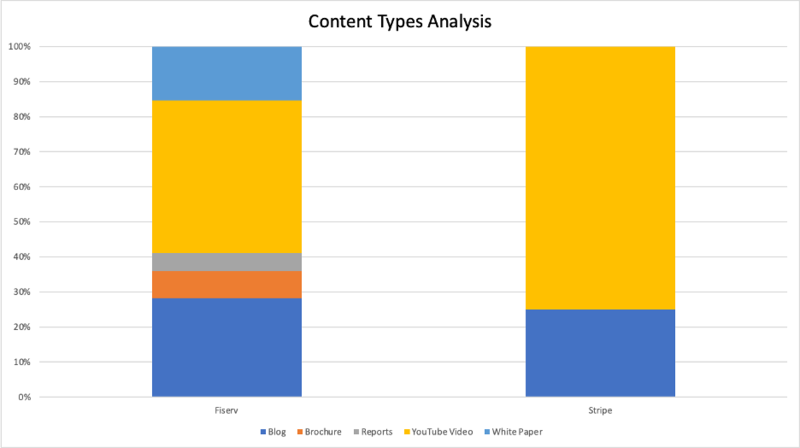Blogs. E-books. White papers. Reports. The list goes on and on.
Behind every great piece of content is a team that strategized, planned, and executed an idea with one goal in mind – to share their industry expertise to help their customers and prospects.
But, to truly understand what customers and prospects actually want to read, competitive intelligence (CI) must be part of the conversation. CI professionals can provide content teams with the insights they need to produce relevant, strategic, and differentiated output.
Today’s blog will walk you through four crucial insights that CI professionals can deliver to their content teams to set them up for success:
- Content topics
- Frequency of content
- Types of content
- Quality of content
1. Content topics
Pinpointing the subject matter that your buyer personas want to see can be difficult. CI pros can make this easy on content marketers. By analyzing the topics that rivals have been covering and benchmarking them to their own company’s, marketers can have that in-depth view of how they stack up that they’ve been looking for.
A CI briefing on topics allows content teams to answer questions like these:
- What topic(s) do your rivals cover most frequently? When your rival is allocating a large chunk of its strategy towards one topic, chances are its top-performing post(s) fall under it. This is a sure-fire way to ensure you’re sitting on an even playing field and it allows you to pursue a topic that, you know for a fact, your audience base connects with… and actually wants to read.
- How can you expand your content topic “inventory”? Content marketing requires loads of creativity and to stand out, you cannot stay stagnant and dull with your topic ideas. Rivals can inspire you to create more compelling content and expand outside your typical, go-to topics.
- How do you stack up to your rivals? Benchmarking can identify holes in your strategy and showcase any strengths or advantages you have. To guide your benchmarking process, CI pros should conduct a competitive analysis (definition: the process of critically assessing the types of content your company puts forth in relation to one or more competitors).

As an example, let’s say you work in marketing for Shopify and are planning out content for 2022. To help build your strategy, your dedicated CI manager suggests that they evaluate the topics that your rival, BigCommerce, has been covering through a competitive analysis. This analysis reveals that the majority of BigCommerce’s blogs cover conversion rate optimization.
This is great news for you since your content team has been considering publishing a series in 2022 on customer retention strategies – ranging from customer loyalty programs to live chat features. In other words, because this topic isn’t covered frequently by BigCommerce, this may just be the differentiator you’ve been looking for to stand out.
And as a plus, when you’re armed with strong visualizations like the one above, it’s easy to identify topic areas where you’re coming out ahead – which, in our case, is “backoffice” and “entrepreneurship”.
2. Frequency of content
Is your content team publishing reports monthly, quarterly, or yearly? Does it publish blogs on a weekly or monthly basis? Does the team publish e-books... at all? Being able to answer these questions confidently not only about your own company but about your competitors, is extremely important in your overall understanding of where your company stands.
For example, if a rival’s blog is skyrocketing in traffic, CI pros can help content teams by digging into how frequently they publish new posts. Is their blog growing because they’re putting out more posts? Or is it growing because they’re actually minimizing activity?
If frequency is declining, that could be a sign that their blog open rates weren’t strong, customers weren’t spending adequate time reading their posts, click-through rates were weak, etc. It’s easy to draw conclusions when a dedicated CI pro has frequency mapped out for you.
And while a CI pro’s analysis of frequency can certainly provide insight on rivals’ strategies and priorities, we’d be remiss not to point out that there’s a fine line between producing lots of content and producing quality content. Before switching up a strategy based on your competitions’ activities, take your findings with a grain of salt and benchmark them against your monthly and yearly analytics. Chances are your frequency has evolved over time, providing you with valuable internal data and intel as well.
3. Types of content
A pivotal part of any content marketing strategy is understanding what types of content your target personas want to see. Does your audience prefer blog posts? Or perhaps videos and podcasts? For a holistic view of what content types are trending, a competitive analysis can, once again, come in handy.

Now, imagine you work at Stripe, a financial services and software company, and you are constantly neck and neck with Fiserv. Fiserv has a reputation for creating strong content in the industry and has an exceptionally large following.
As a CI pro, you’ve identified that Fiserv primarily publishes “YouTube Videos”, “Blogs”, and “White Papers”. You recall Fiserv’s white papers having a big splash in the industry. This is what one might call an ‘aha moment’ – the realization that your content team must incorporate white papers into its strategy to maintain competitiveness.
Without the help of CI, your content team may have gone another year without producing this valuable asset. And for those at your company who may feel uncertain about a pivot like this, you now have a visual and real-life proof to back up why this change could be worthwhile.
4. Quality of content
Common misconception: Measuring the quality of your competitors’ content is judging whether it’s good or bad.
There’s much more to it and, by conducting a thorough analysis, CI experts can provide a strong picture of content quality to ensure that your company is on the right path to success and doing a better job than its competitors.
CI pros can provide intel into quality aspects such as:
- Content length: Does rivals’ content end abruptly and appear quickly thrown together (leaving out major takeaways)? Is the word count so high that viewers likely won’t read to the end?
- Content development: Do the points made support the overall theme and focus? Is it easy to follow and organized? Does the conclusion tie back to the introduction?
- Content depth: Is your competitors’ content typically a high-level overview, or does it provide real-life examples for its readers? Does the content dive deep into a specific vertical or is it broad enough for any reader to connect with?
- Content accuracy: Is the information shared true and backed up with data and/or sources? Are the arguments and conclusions drawn correct? Is the content error-free on all fronts?
- Relevance to target audience: Does your rivals’ content answer the questions and concerns of its audience? Is the content helpful and will attract its intended audience’s attention?
In other words, to measure the quality of content, CI specialists must deliver these insights to content teams so they can know where your content stands in comparison to rivals’. Remember, quality trumps quantity!
Allow your content to blossom with the help of CI
The strongest CI programs are the ones that empower stakeholders across each and every department. Armed with intel, your content team will feel more confident than ever that they’re publishing strategic, high-quality, and differentiated content that appeals to your company’s target audience. But, there’s no denying the plethora of information out there – this can be time-consuming for CI pros!
That’s why Crayon’s competitive intelligence platform is the perfect tool for CI pros and content teams, streamlining the process of content analyses and keeping B2B marketing teams in the loop on their competitors’ content strategies.
To see Crayon for yourself and start competing like you mean it, schedule a demo today!

Related Blog Posts
Popular Posts
-
 The 8 Free Market Research Tools and Resources You Need to Know
The 8 Free Market Research Tools and Resources You Need to Know
-
 How to Measure Product Launch Success: 12 KPIs You Should Be Tracking
How to Measure Product Launch Success: 12 KPIs You Should Be Tracking
-
 24 Questions to Consider for Your Next SWOT Analysis
24 Questions to Consider for Your Next SWOT Analysis
-
 How to Create a Competitive Matrix (Step-by-Step Guide With Examples + Free Templates)
How to Create a Competitive Matrix (Step-by-Step Guide With Examples + Free Templates)
-
 6 Competitive Advantage Examples From the Real World
6 Competitive Advantage Examples From the Real World





